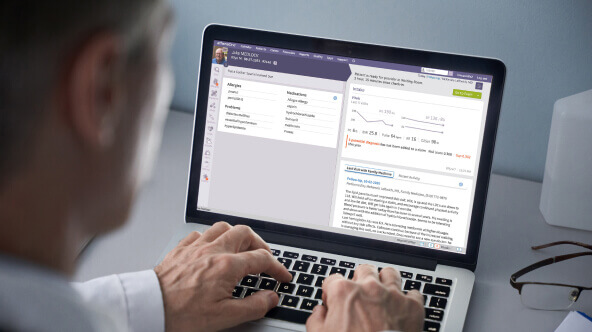
How one FQHC is using EHR data to elevate the patient experience
At athenahealth, we recently had the chance to sit down with Laura Medows, vice president of information services at Open Door Health Services, a multi-specialty federally qualified health center in Indiana, to chat about how Open Door is using EHR data to help improve clinical and operational performance. The discussion covered a broad range of topics, including how data reporting provides vital actionable insights to better understand patients’ needs, and how to utilize and roll out new features to improve both clinician and patient experiences.
Below are some highlights from the conversation.
Streamlining operations with game-changing reporting integration
Q - How has integrated UDS reporting and detailed care gap reporting allowed you to improve quality?
In part, that's the care gap reporting features that we're starting to see really roll out from athena with integrations. And in part that's integrations with our population health registry tool, Azara. That tool really has changed the game for us and allowed us to prep our patient charts ahead of time and close a lot of care gaps during visits that we otherwise may have missed. And so really the combination of the care gap reports that are coming into athena directly as well as the integration with [Azara] is what's helped us to be able to deliver far better-quality care as far as health outcomes and really been a game changer for our quality scores in general and what we're reporting to the feds on an annual basis.
Q -The care check report gives you visibility into how much time providers are spending on documentation, with patients, and on other tasks. How has this report impacted provider experience at Open Door Health?
I hope it feels fantastic for them. I don't have a recent provider satisfaction survey, but overall, our providers have expressed anecdotally that they have very positive experiences with more one-on-one attention not focused exclusively on their productivity, as well as how efficiently they're using the system with significant attention given to quality indicators. I think it's important that you're taking your data and extracting it, but it's not just Excel sheets that you're sending out. It's putting together a story with that data and taking that provider, one on one, and saying, “Here's what I'm seeing ... here's what is actually happening in your practice” and creating a story around that and then finding ways to improve it. Translating data into a story is extremely important — I think that's what makes change happen.
Q - How does all of this translate into day-to-day changes to your workflows or staffing models?
I think one of the things that comes to mind first is really the ability to prep. athena has added the prep tool, which allows us to use the population health registry tool in combination with the prep features within athena to really save time during the actual visit. We can provide more face-to-face time with the patient in the exam room and less time back in the provider offices on the laptops, documenting.
I would say the focus for us has really been on providing more high-value services — freeing up the RNs to work to the top of their license instead of spending the majority of their time digging through [outside EHR] records and accessing additional systems during the time they should be spending with the patients.
Next-level provider support with Dragon Nuance
Q - Speaking of ways that you support your providers, you recently rolled out Dragon Nuance, the voice recognition tool. What has the reception been, and how has it impacted documentation time?
We knew we had some providers that really utilized keystrokes as their main form of data entry into the progress note. We knew those were going to be our sweet spot, that low hanging fruit for DAX. We chose those providers first and saw a 60-70% reduction in overall visit documentation time, which is just phenomenal. I don't think I've ever had a KPI or a stat drop that quickly as a result of one change. And really that happened within 60 days, which is just phenomenal. It immediately gave that time back to the provider during their visits or for other types of documentation — sending off orders, clinical documents, etc. But really that started with that care check report and just identifying those providers who are really struggling and getting their documentation in a timely manner. And so that's how that developed.











